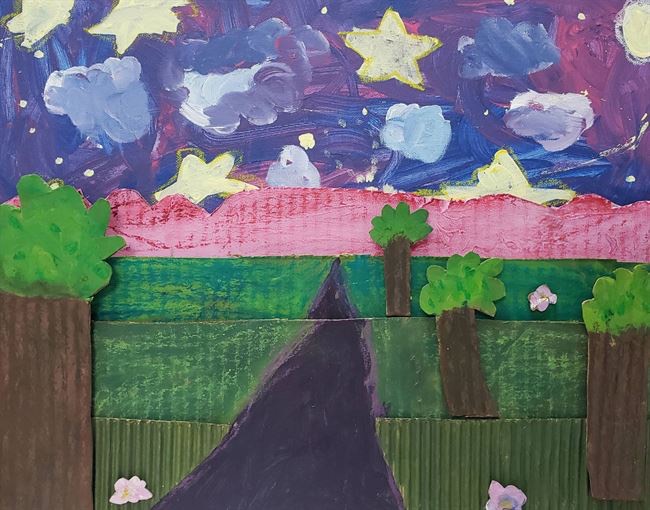Each month I will be spotlighting one of my students – past or present, and their artistic ventures! I work with students of all ages and abilities and you’ll get to learn a little bit about these amazing artists and their work!
Our February spotlight is on:

Elijah Cockey
How long have you been taking art lessons? “I have been taking art lessons since 2012.”
Why did you begin to take art lessons/how did you become interested in art? “I began taking art lessons because, as a homeschooler, it is hard to find opportunities to do art.”
What or who inspires you to create your artwork? “Well, I have no muse, really, but (Ms. Jenell can back me up on this), I really like sharks and snakes, so I create a lot of art about them.”
What are your favorite mediums and/or subjects for your artwork? “My favorite medium I’ve used in class is probably acrylics. My favorite medium I’ve used outside of class is probably blacksmithing.”
Is there anything else about you that you’d like us to know? “One thing I’d like you all to know is that the word “Lego” comes from the Danish term “Leg Godt,” or “Play Well.” I thought that was interesting.”

Besides visual arts are you into any other art forms? “I am certainly into other art forms. I like music a lot. I play cello, upright bass, electric bass, and banjo. I’m considering learning bagpipes, but that’s still a work in progress.”
Why do you think art is important? – Why is it important for you? “I think that art is important for numerous reasons, but I’ll focus specifically on art’s historic significance. Art—whether that be paintings, carvings, photography, sculpture, etc.—has proved to be a key component of our understanding of history. For example, when we come across a culture whose writing system is yet to be deciphered, or a culture who may not have had a written language, their art is often one of the sole windows into their world that we have. Even in recorded history, images of historical events can give contextual evidence for historical events. Art is important to me for the same reason.”
What is your favorite thing about art? “My favorite thing about art is the wide variety of artistic mediums there are.”
What artist(s) from history do you admire most and why? “The artist I admire most in history is Caravaggio. Though he is underappreciated, he influenced other artists.”
Do you plan to have a career in the arts? “I do. I plan on becoming a musician.”

Do you enter your artwork in any shows or contests? “Whenever an opportunity comes up, whether that be through art class or through another organization like 4-H, I always submit my art. Did I say I win? No. But I submit.”
Is there a certain style, or type, of art that you’d like to someday try? “I’ve always wanted to try glassblowing. I’ve seen people do it at Jamestown, the Corning Museum of Glass, and Salisbury University. It’s a mesmerizing process.”
Do you have a favorite color? “My favorite color is orange. I like campfires, leaves, pumpkins, and all other things related to fall, so orange seemed like a natural favorite color.”
How long does it take you to complete your artwork? “My artwork takes as long for me to complete as I will stop talking in art class. Fact.”

What is your favorite thing you’ve ever created and why? “My favorite thing I’ve ever created in art class is a shark on a board. Kind of like a…Sharkuterie board. I crack myself up.”
When you’re making your art do like to listen to music or watch tv for inspiration (if so what)? “I like listening to music while I do my homework. I find it helps me focus.”
Is there an aspect of art that you don’t like, and why? “One thing that I don’t like about art is the fact that stick figures are often looked down upon. That’s kind of offensive…if you’re a stick figure, of course.”
Do you have any advice for someone who wants to become an artist or improve their skills? “Yeah, go take from Ms. Jenell.”
What do you think makes a good artist and/or piece of art? “I think that a good artist has a point to make with their art, and I think good art makes that point. It doesn’t have to be a deep, metaphysical point. It just ha to be worth making.”
How has your artwork improved/what have you done to keep improving as an artist? “My artwork has much improved over the years. One skill I have developed in particular is the ability to look at a picture and draw from that picture.”
Elijah brings fun and humor to class every week – he enjoys making others laugh (as well as “cracking himself up”), his sense of humor reflected in his artwork; bringing a smile to the viewers. He also likes to think outside the box and add his own perspective or take on the given subjects, mediums, & styles, creating unique and personal pieces of art!
Check out our other student spotlights here!












































































































